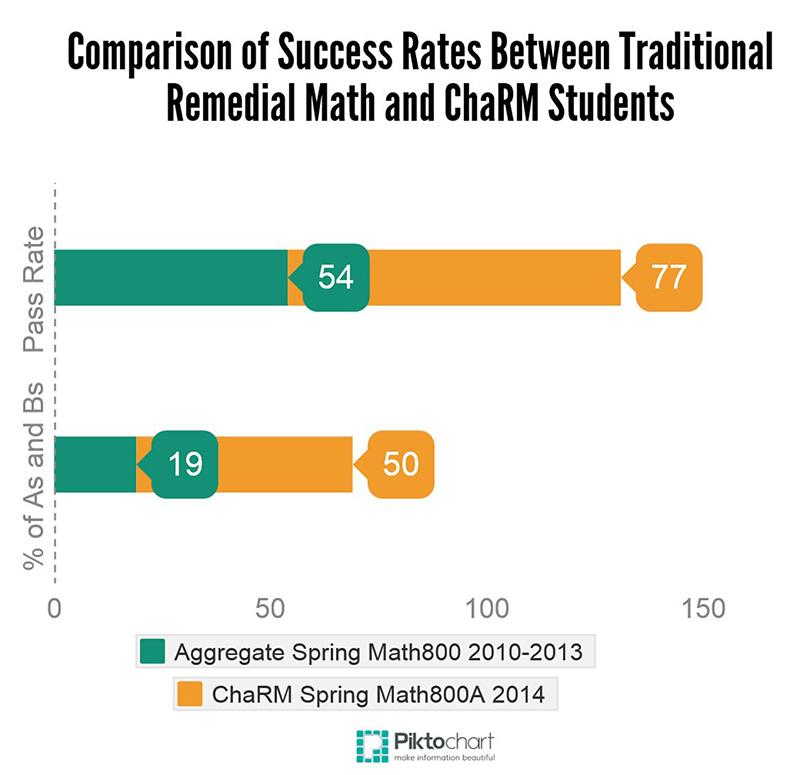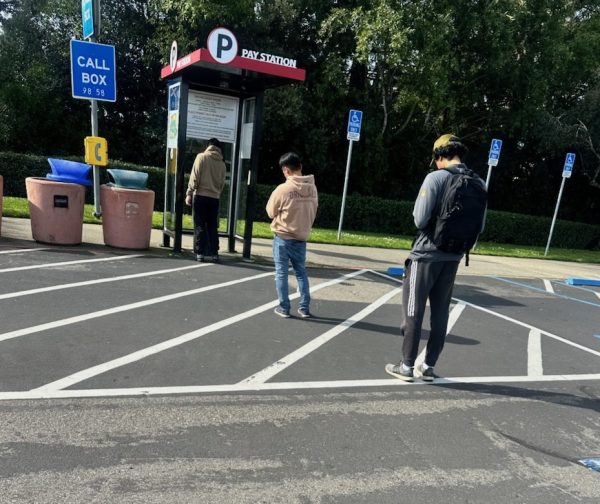Changes in remedial math leads to increased passing rate
The Changing Remedial Math Project is entering the second year of a Programmatic Excellence and Innovation in Learning grant to restructure the lowest level of remedial math after a successful trial run during spring quarter 2014.
The first quarter of ChaRM resulted in a pass rate of 77 percent, 50 percent of which were A’s or B’s, compared to regular remedial courses that have an overall pass rate of 54 percent with 19 percent A’s or B’s, according to the ChaRM Project’s final report.
Julia Olkin, professor of math, who was a part of the team that helped develop the program said the success of ChaRM was due in part to the emphasis on exploring in groups and learning on your own instead of being told what to know.
“You’ve gotta have those a-ha moments,” Olkin said. “I can’t tell you what you’re going to discover, you need to discover it.”
In addition to exploring in groups, students start with the concrete, using manipulatives such as algebra tiles to work out problems. Then they move onto the semi-concrete and lastly, the abstract in order to ground math “in something that’s real.”
“Too many teachers want to just jump to the abstract and it is just symbols that you’re moving around and it doesn’t mean anything,” Olkin said. “Then students just try to do weird things because they don’t have it grounded in anything.”
The program borrowed some of its components, such as the mastery learning, from the remedial math program at San Jose State University, which has the highest remedial math pass rates in the CSU system, usually in the 80 to 90 percent range.
Sandra DeSousa, remedial math professor at San Jose State University, said mastery learning is a big part of its success because it requires students to earn the right to take exams by attending class and completing all of their homework at a certain level of competency. Additionally, each exam must be passed with a score of at least 70 percent, but the student gets three attempts to take the exam.
“By having students earn the right to take an exam, it decreases the number of failed exams we have to grade,” DeSousa said. “Students have to show us they’ve learned the material well enough to take the exam.”
At California State University, East Bay, the exams must be passed by at least 85 percent, according to the ChaRM Project’s final report.
The ChaRM BC Project will continue to build on the ChaRM model developed during the spring, extending the program into a self-contained, yearlong sequence.
Olkin said the program would only affect students who test into the lowest level of remedial math, Math 800. Students who place into Math 900 or 950 on the Entry Level Math Exam will still take just one or two quarters.
“You can’t come into the middle of ChaRM because it builds on what’s been done before,” Olkin said.
New students who need remediation will be randomly placed in one of 15 sections by the General Education Office, eight of which will be the regular Math 800 course, while seven will be a part of the ChaRM program.
“It’s so that we have some comparisons along the way,” Olkin said. “We can see are the ChaRM students getting the material at a better level, are they passing at a better rate, is their attendance better?”
Olkin said this was important for all students in future coursework because most majors require some math in order to graduate, whether statistics for social sciences or business calculus for business majors.
“We can’t change whether students need remedial math,” Olkin said. “What we’re trying to do is not have them repeat it … and then we want them to understand it better.”












